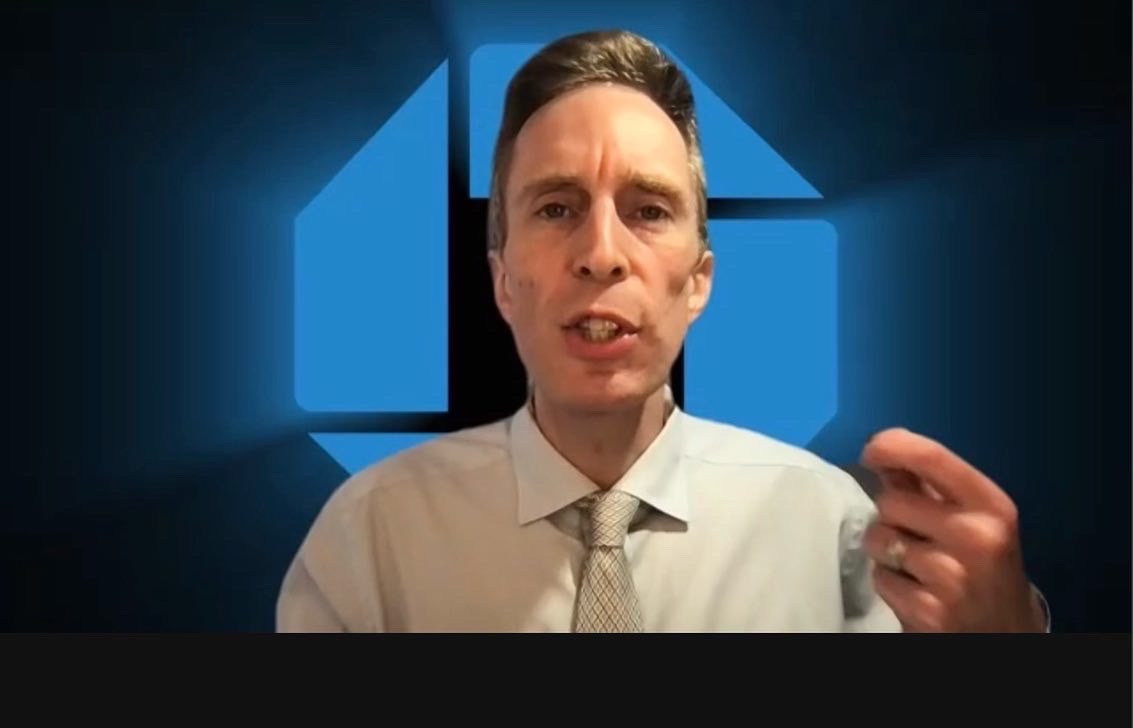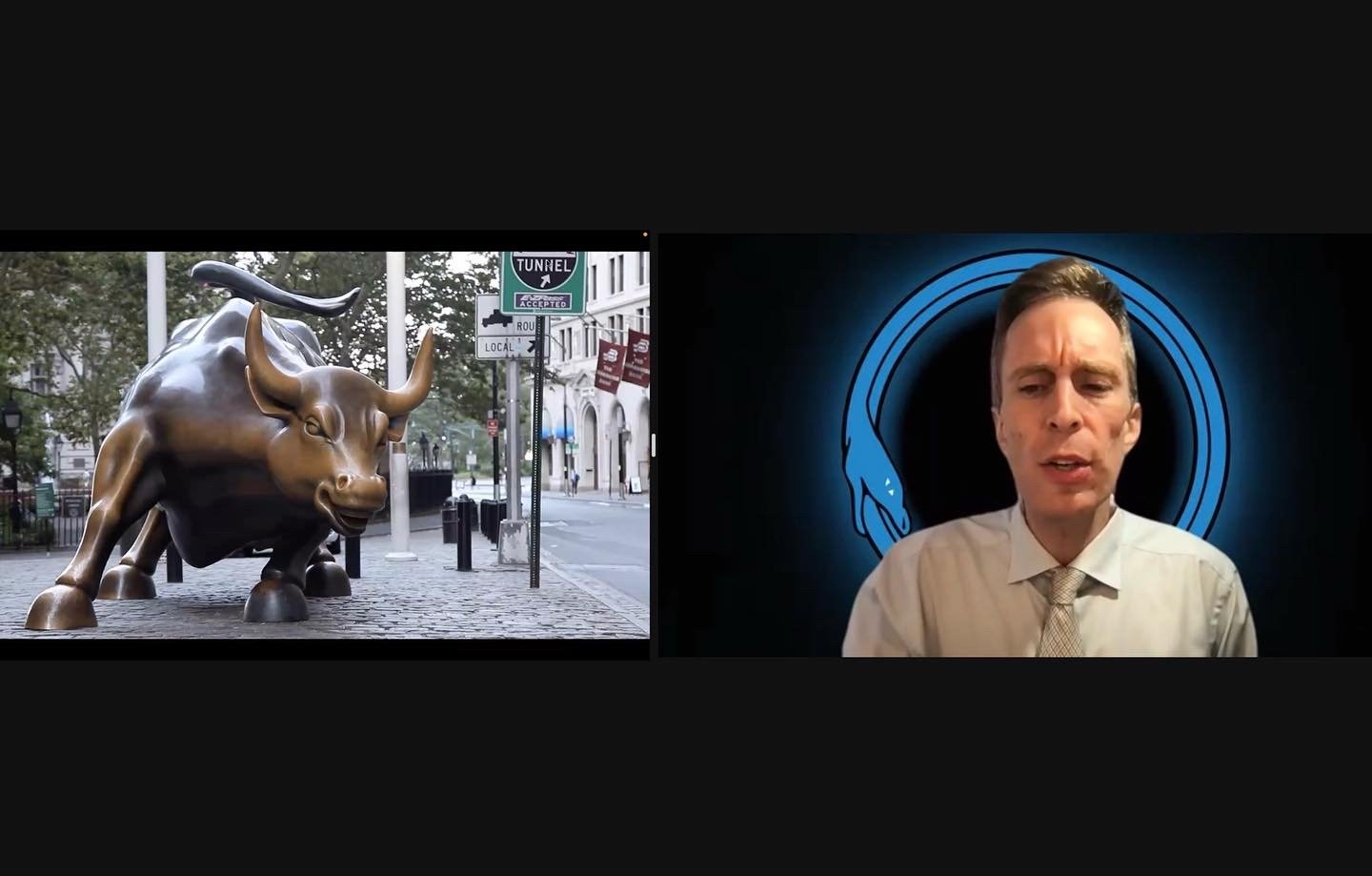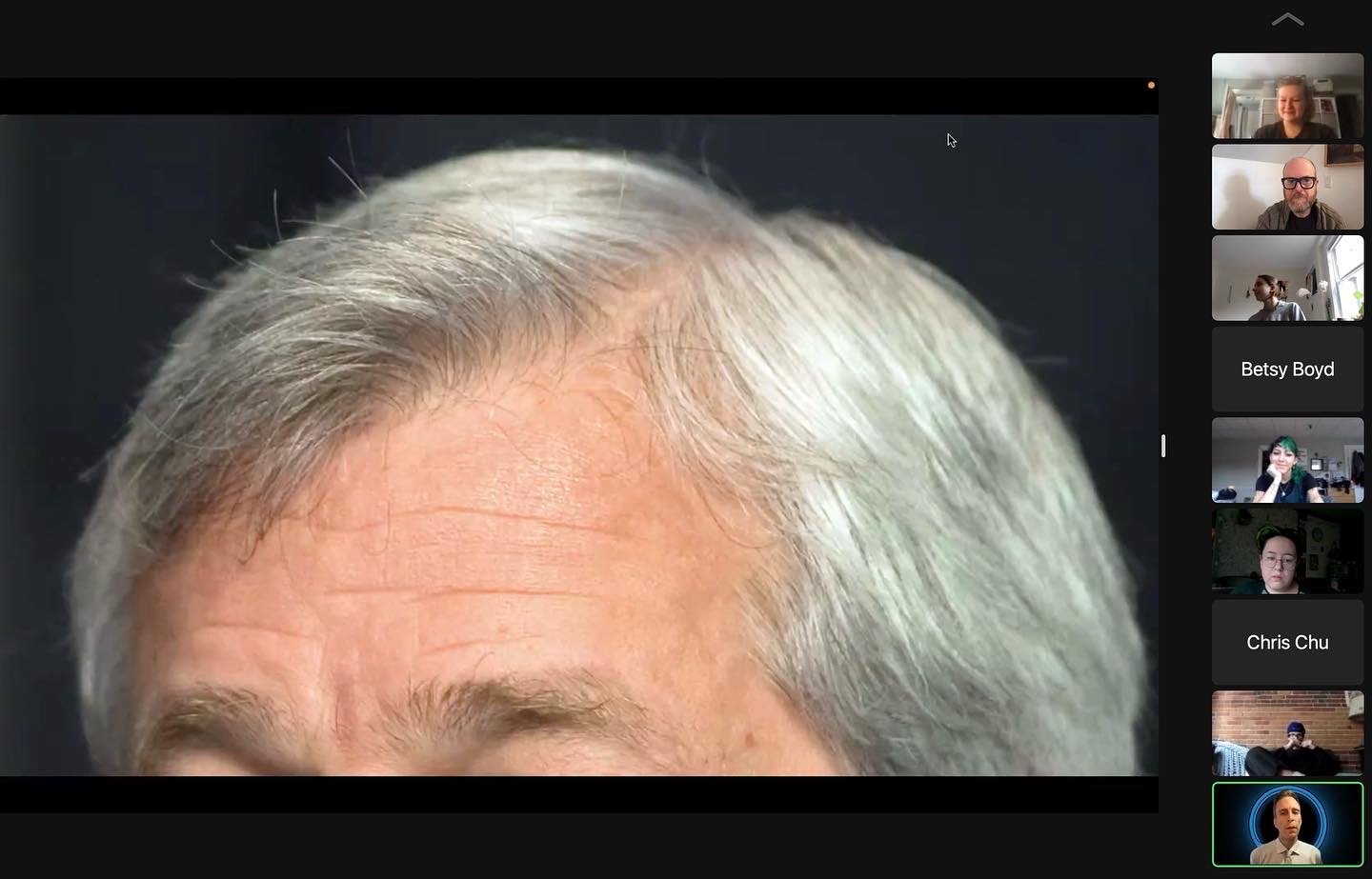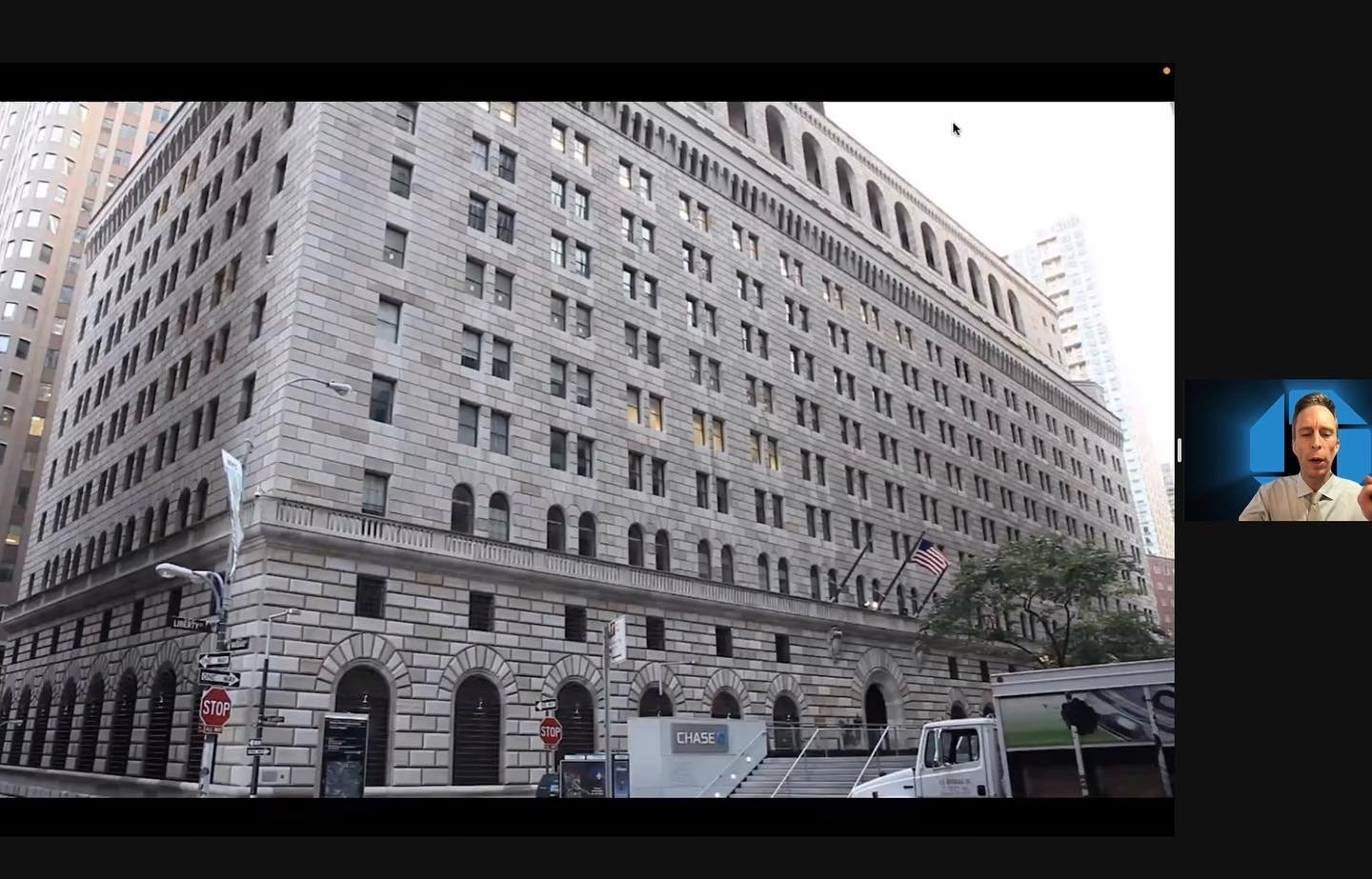Performing (with) in Zoom
Recently, I had the honor and pleasure of presenting my decade long performance art project, Before The Nation Went Bankrupt to a video art class from Maine College of Art & Design over the conferencing app Zoom. Before The Nation Went Bankrupt is an alternate and more libidinal history of the financial crisis, told through the semi-fictional love letters of JP Morgan Chase CEO Jamie Dimon. I perform as if I were Dimon —although clearly I am not — and the performance hinges on a chimera of fact and fiction, and of slipping in and out of character. In the week leading up to the performance, I wondered how I might pull this off on Zoom, a technology that devours subtle human interactions and spits out passivity. If the performance were to succeed in this remote form, then I would have to lean hard into its limitations.
Zoom is now a feature of working (and living) through this pandemic. In this way, performing on zoom is in line with my impulse to take art into arenas not necessarily meant for art. From street tours, lectures and powerpoint presentations, for the past decade, I have been inserting art into a mollifying corporate aesthetic regime. The blandness is the point. I have been inspired by cruising the aisles of Office Depot late at night. Part of it is that it amuses me, these two incongruous things, but it is also a reaction, a tactic to use it against itself ultimately exposing the barbarity behind the blandness.
My first challenge was a technical one: overcoming the consumer level presets and optimizations that make Zoom work at the click of a button to the broadest number of people. The first challenge was lighting and background. I needed to put my tiny head (boxed in on zoom) into a non place, a dystopian heterotopia. I lit myself dramatically with clamp lights and looped the ouroboros / chase logo animation behind me. The next issue was sound, and mixing both high fidelity music and sound with my voice. To do that I had to patch the computer sound and the Heil PR 40 microphone through my Yamaha MGUX mixer and reset all of the audio settings in zoom, so that it recognized the mixer. The next issue was visuals in the share screen. I encouraged participants (I feel like Zoom has participants, rather than an audience) to set their view to show presenter mode (rather than the default gallery mode) while I was screen sharing so that they would see my box with me speaking in the corner and the whole screen would be comprised of the video I was sharing. Video and sound from my laptop was streamed through Qlab, an audio/visual cuing system used for live performance. To use the full capacity of this app, I had to stream a section of my screen using Syphon Virtual Webcam, with the remainder of my screen (invisible to participants) containing the controls.
A few thoughts of performing with(in) Zoom, the app of the moment, as it were. It is, and will foreseeably always be, an awkward, voyeuristic medium, This awkwardness translated the creepiness of my banker character very well. The lags and fidelity issues that are common when streaming large amounts of information played into the disconnected nature of the performance. If it were empathy for the character I was after, then it would have failed. But a distanced creepiness worked very well. On the other side of that, it was nice to step into character to perform and back out again for the Q & A. I stripped the background out, exposing my studio and turned off all the dramatic lighting, becoming “myself” instantly. This instant contrast played well over video conference.
The experience was completed by the participants. Seeing closeups of their faces during the performance let me know how each line was landing. I would definitely say that if possible, perform with participant cameras on. I know it is not always possible or even fair to ask people to turn their cameras on, but it is something worth asking for gently at the start of a performance. The class was filled with engaged students/artists whose light shined through during the Q&A. At first there were tentative boilerplate type questions from the participants, but a few burgeoning insights were evident in some of the comments I received. I feel like I kind of stunned them a bit; when you present people with a confusing experience that may or may not be art, you can’t expect them to have immediate, fully formed thoughts, and that’s ok. But according to Professor Reiman, the conversation enfolded long after I made my exit, which is really gratifying.
Thanks for having me Josh, and for sending me these photos that really captured the moment.




